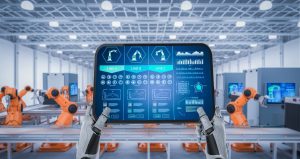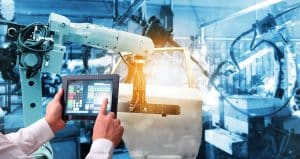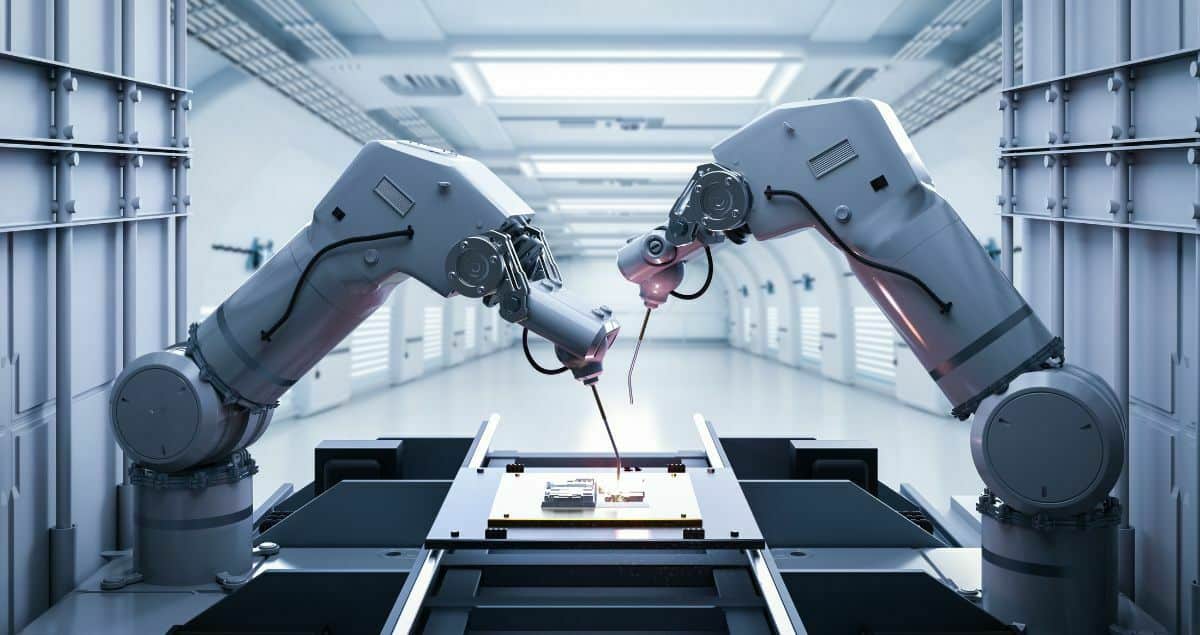If you are looking for What Is Automation In Manufacturing, then here is a complete step by step guide. Everything that you need to know. If you are wondering: What is automation in manufacturing? Automation in manufacturing is when technology is used to speed up and improve the process of making things. It involves carrying out manual tasks using cutting-edge hardware and software.
uses high-tech hardware and software to do things that used to be done by hand. This takes away the need for human interaction while increasing productivity. Automation technology in factories might include things like robots, CNC machines, and AI systems.
Hence, Increased productivity, decreased labor expenses, improved product quality, and heightened safety are just a few of the many advantages that companies that use automation in manufacturing enjoy. Because automation has made manufacturing more flexible, businesses can respond quickly to changes in what customers want or how they want their products to be made.
If you are looking for What is automation in manufacturing? All factories have become more productive and have made better products because of factory automation. This has helped businesses adapt to the changing nature of the modern market.
What Is The Aim Of Automation?

The goal of automating a process is to increase output and efficiency by reducing or getting rid of the need for human input. Robots, computer numerical control (CNC) equipment, and artificial intelligence (AI) systems are just some of the cutting-edge technology and software that may be used together to achieve automation.
When businesses automate tasks that they do often or that could be dangerous, they can save time and effort, boost productivity, and improve the quality of their products. Automation can help factories in many ways, such as by lowering labor costs, making factories safer, and making them more flexible.
What is automation in manufacturing? The ultimate goal of automation is to improve output while investing less in people and making their work less dangerous. Using the potential of technology can help businesses stay competitive in today’s global business environment, which is always changing.
What Is Automation In Manufacturing And Which Device Is Mostly Used For Automation?

Automation can be done with a variety of tools, most of which depend on the process being automated. Yet, one of the most popular automation tools is the programmable logic controller (PLC). Industrial process PLCs are specialized computers that can be used to manage and automate industrial processes. rammed to work as sensor monitors, machine regulators, or communication hubs for the different parts of a production line.
Flexible PLCs may be used for many purposes. They’re used in production, transportation, and critical services. Because they can handle a wide range of inputs and outputs and are flexible, they can handle complicated industrial processes well.
In conclusion, programmable logic controllers (PLCs) are reliable automation technology that can be used in many different ways and makes industrial settings more efficient, safe, and cost-effective.
What Are The 4 Types Of Automation?
Here are the types What is automation in manufacturing? Four types of automation have different features and functions. They include:
- Fixed, or hard, automation is purpose-built. Fixed automation is used in repetitive production operations like vehicle assembly lines.
- Programmable automation can do several tasks. Food and beverage industry, where products and processes change often, uses programmable automation.
- Flexible automation combines fixed and programmable benefits. Versatile automation can perform a multitude of tasks while being efficient and reliable.
- Cognitive automation, also known as intelligent automation, automates complex tasks using artificial intelligence and machine learning. Banking, healthcare, and customer service use intelligent automation.
Most of the time, the type of automation used will depend on what the process being automated needs or wants.
What Is Automation In Manufacturing And What Is The Biggest Benefit Of Automation?

Automation boosts productivity the most. Automation may save money and free up staff to focus on more valuable duties. Automation ensures uniformity and precision, reducing product and process errors.
Automation also helps to reduce expenses, which is another major benefit. Businesses may be able to make more money and cut costs by reducing or getting rid of the need for human labor. Automation not only makes it less likely that someone will get hurt, but it also frees up people from tasks that could be dangerous.
Automation also gives companies more flexibility in how they make things, so they can respond quickly to changes in demand or product needs. It also makes it easier to collect and analyze data, which gives us valuable information about how the manufacturing process works.
Automation’s biggest benefit may be its ability to make work more efficient and productive while lowering the costs and risks of human labor.
Conclusion
If you are looking for “what is automation in manufacturing?” Lastly, automation in manufacturing is when technology and machines are used to do jobs that humans used to do by hand. Automation has changed the manufacturing business by making it much more efficient, cheaper, and better at making consistent, high-quality products. By automating boring or dangerous tasks, companies can save time and money, make their employees safer, and improve their working conditions.
Robots, programmable logic controllers (PLCs), and artificial intelligence (AI) systems are getting better and better, making it possible for companies to make better goods at lower prices. But businesses need to carefully weigh the costs and benefits of automation before putting it in place.
Things that should be taken into account include the complexity of the manufacturing process, the cost of equipment and maintenance, and the effect on the workforce.
In the end, factory automation could change the industry by making it more productive, better, and more innovative.

